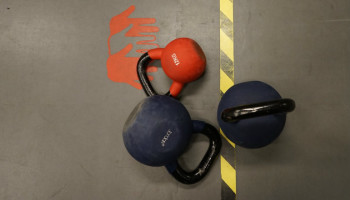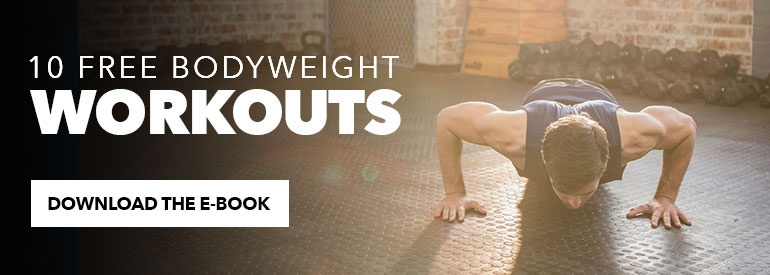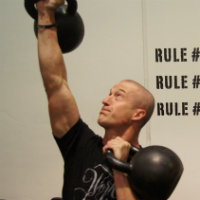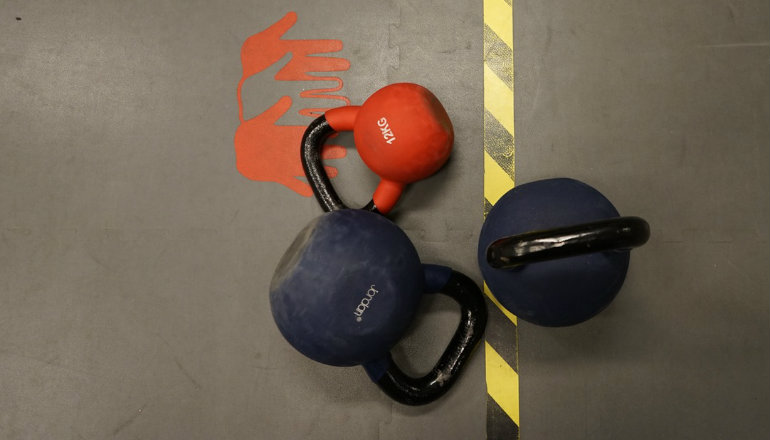 Reading Time: 7 minutes
Reading Time: 7 minutesI recently wrote a three-exercise kettlebell program that I coined “Recon Ron 2.0.” The whole premise of it was to design a program that yielded the best possible results in a short time span. It was never designed to be a lifelong program to follow — if such a thing even exists — nor did I consider the exercises necessarily the most important kettlebell drills.
Which of course triggers the question: what are the central exercises to kettlebell training? What movements can you do with kettlebells that are both the most effective and offer something you can’t get from other implements?
Given that we’re looking for exercises that fit kettlebells the best, you have to start with the question of what that means, and then choose the most effective movements accordingly. We must also keep in mind that the most effective movements you can perform with the kettlebell will likely include advanced movements.
So let’s walk through that discussion and I’ll share what I believe to be the three most effective kettlebell exercises for the advanced trainee.
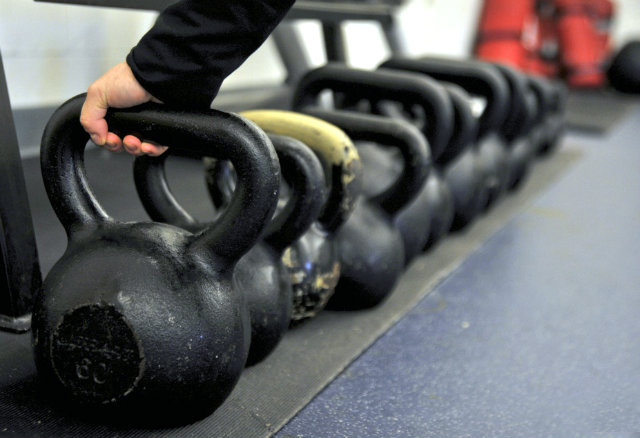
One Hand Only, Please
Kettlebells offer an offset weight that is best manipulated with one hand. None of the most effective kettlebell exercises are two-handed. In fact, the only time you’d choose to use two hands on a single bell is for either corrective work or patterning work for more intense progressions.
For instance, the two-hand swing is an entry point for many into kettlebells. But the one-hand swing is superior to the two-hand swing in every respect, and the snatch superior again. The goblet squat is the entry point to squatting, but squatting with two kettlebells (one in each hand) is a far better and much more difficult progression.
Ideal Rep Ranges
In the original Russian Kettlebell Challenge book, Pavel Tsatsouline’s first book on kettlebells, he noted that based off studies done by Falameyev, beginners should start at 16kg (for men) and progress to 24kg over a four- to six-week period. In addition, they should use no more than three sets per arm with repetitions no fewer than five or six and no more than fifteen or sixteen.
Looking at those rep ranges, it stands to reason that the best choices for kettlebell exercises are those that are repetitive in nature such as swings, snatches, or jerks. Dissecting further, we can look back on step one in our analysis and see that these exercises are all better performed single handed, or at least with a bell in each hand, but never with two hands on one bell.
Kettlebells and the Shoulder
Kettlebells also offer a nearly unprecedented amount of variety to train the shoulder girdle. Other than gymnastic rings, which require far more specialized training and strength, kettlebells allow you to train the shoulders through any angle and speed you can imagine.
So, if our aim is to select what the kettlebell does best, our list of best exercises for kettlebells should be single-handed, cyclic in nature, and offer an ability to train the shoulder through large ranges of motion.
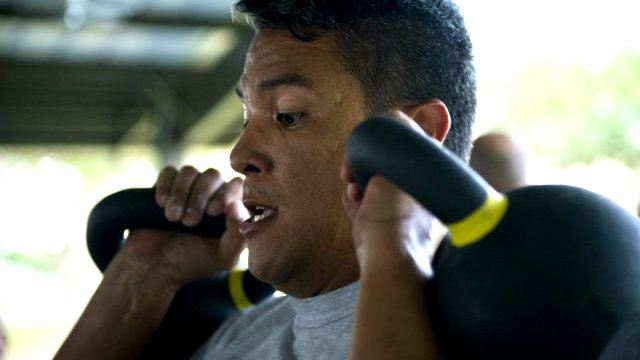
Exercise #1: Clean and Jerks
The first choice has to be clean and jerks, otherwise known as “long cycle.”
In Enter the Kettlebell, Pavel’s seminal work on kettlebells, numerous studies were cited. Among the many benefits of using long cycle, he found that it contributed to improved military PT testing and other varied athletic events such as obstacle courses (the infamous “WTH effect”). In addition, body weight increased, blood pressure decreased, and in Return of the Kettlebell, Iron Tamer Dave Whitley (former Master SFG) is quoted as saying, “The long cycle added 15lb to my deadlift [one-rep max], even though I had not done deadlifts in over a year.”
For those wanting some research that is a little more modern and Western, there is ample evidence to back up the use of faster eccentric training for muscle growth. In Return of the Kettlebell, Pavel again cited numerous studies with one — Paddon-Jones, et al, 2001 — that indicated that fast eccentric training resulted in a 30% increase in concentric strength and a 27% increase in eccentric strength. (Remember: the concentric portion of an exercise involves shortening of the muscle(s) in question, while eccentric involves lengthening of the muscle.)
The short story? If you’re after big arms and shoulders as well as some serious strength endurance, then long cycle may be the best kept secret in the training world.
Exercise #2: The Bent Press (or the Windmill)
While the get-up is much revered as the cure-all for many things — and rightly so — there is an exercise family that trumps it. Having had the luxury of being around the kettlebell scene for quite a while, I can remember a time when the famous “program minimum” (what would later become Pavel’s Simple & Sinister) did not include the get-up. It was the bent press and the snatch, not the swing and get-up, that were regarded as being the two most essential exercises, provided you had the requisite shoulder and hip flexibility.
The bent press, and its related movement the windmill, represent the get-up on steroids. But the thing to remember about steroids is that while in the right dose they can help deliver powerful athletic performances, they can also give you cancer and you can die. In other words, the windmill and bent press are more powerful than the get-up as exercises and train more components of movement to higher degrees, but for many people they may be too much to begin with.
Strength pioneer Bob Hoffman wrote in 1938, “The bent press is the making of a lifter. It promotes efficiency in all lifts, and its practice will promote a great increase in strength development.” To perform the bent press, and its earlier progression the windmill, you will need a good hip hinge and flawless thoracic rotation. And that ability to disassociate the hips and shoulders and train them through large ranges of motion while maintaining a neutral spine is an important element in athletic training.
Exercise #3: The Double Kettlebell Front Squat
One of the new trends in training is loaded carries. Exercises like farmer walks and rack carries are a fantastic way to develop real-world core strength and stability. But not many people have access to a free-range style of gym like mine at RPT and they lack the space to effectively carry.
Enter the double kettlebell front squat.
The kettlebell front squat contains so many important elements. The anterior load makes squatting better easier, as it forces the abdominals to engage fully, which in turn allows the hips to free up and work better. That placement of load also allows for a more upright torso angle, meaning there is less stress on the lower back. Speaking of your back, the lats, which are an essential element to core stability, will have to fire up like crazy to stop you dropping the bells in front of you as you squat.
World record-holding powerlifter Donnie Thompson is rumored to have used double kettlebell front squats as assistance work on the way to performing his 1,000lb squat. For reference, 2 x 40kg kettlebells for 3 x 8 is what someone who squats 1,000lb uses. (40kg equals 88lbs.)
Kettlebell expert Artemis Scantalides has said, “The double kettlebell front squat allows you to train a decreased load for the same physiological effect. So even though you are not squatting as much weight, because of the asymmetrical shape of the kettlebell, and the placement of the kettlebells in the rack position, you are able to maintain squat strength by training the double kettlebell front squat regularly.”
And strength and conditioning specialist Tony Gentilcore recently said, “It humbles people. Even large humans who can seemingly squat Ohio will find this variation challenging. It doesn’t take much. Two 24kg bells will make many huddle in the corner sucking their thumb.”
The 3 Most Effective Kettlebell Exercises
So there it is — within these three powerful exercises, you have cyclic, fast-eccentric strength work that will blur the line between strength and strength endurance:
- That go-all-day stamina that is often a sales pitch for kettlebells all comes from the long cycle.
- The windmill and bent press include high degrees of hip and shoulder mobility and stability, which will injury-proof you and keep you supple and strong.
- And the double kettlebell front squat will test your full body strength.
None of these moves can be considered beginner moves, but then none of the most effective training is ever beginner-level training.
